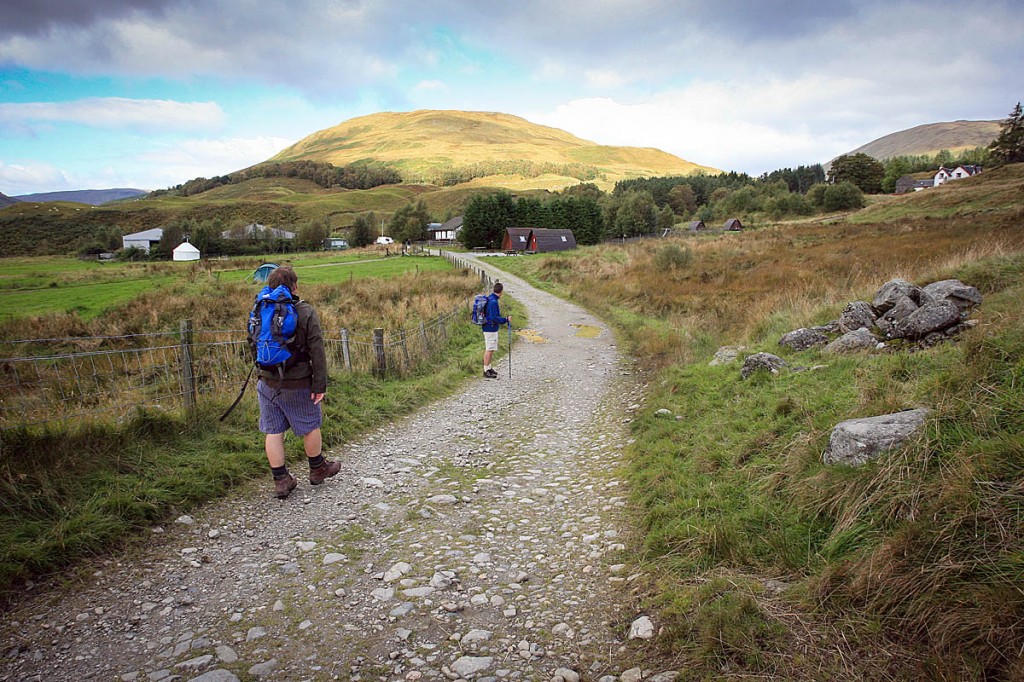Some of Scotland’s most popular paths are being made more accessible as increasing numbers of people make use of the great outdoors during the coronavirus pandemic.
Many of Scotland’s Great Trails will benefit from improvements costing almost £111,000.
NatureScot, the Scottish Government’s advisory body on the outdoors, said more than 70 per cent of the nation’s population lives within five miles of one of the great trails, a network of 29 long-distance routes.
Much of the work announced involves removing barriers and improving access.
The funding includes £26,000 for a community project led by the Helensburgh and District Access Trust to build a new bridge on the Three Lochs Way.
Working with the Loch Lomond and The Trossachs national park, almost £19,000 is being invested in improvements to the popular West Highland Way at Keilator, near Crianlarich, and between Ewich and Tyndrum.
The Clyde Walkway will benefit from around £20,000 for a new wooden boardwalk and the replacement of stiles with self-closing gates to make access easier. Similar work to improve accessibility is also being carried out on the Cateran Trail at a smaller scale.
Repairs and improvements to the path surface on the John Muir Way at Falkirk will also be carried out with funding of more than £26,000.
Meanwhile £20,000 has been earmarked for a partnership project led by St Fillans Community Trust to create a local path linking the old railway line between St Fillans and Lochearnhead which will form part of the Cross Scotland Pilgrim Way.
Bridget Jones, NatureScot recreation and paths manager, said: “The Covid-19 pandemic has demonstrated more than ever before how important a nature-rich environment is for our physical and mental wellbeing.
“It’s encouraging that we have seen an increase in the number of people enjoying the outdoors over the past 12 months but at NatureScot we want to ensure that everyone has the opportunity to access these benefits.
“This funding will improve surfaces, remove barriers and increase access on some of our most popular and scenic paths and trails, making it easier for more people to connect with nature and realise all of the many benefits that can bring.”
Kenny Auld, recreation, access and health manager for Loch Lomond and The Trossachs National Park Authority, said: “With more people than ever looking for ways to get out and enjoy the outdoors, this funding will provide very welcome improvements both in terms of upgrading existing well-loved routes like the West Highland Way and Three Lochs Way, but also allowing new stretches to be created connecting paths and extending the network of options for people to enjoy around the national park.”
Geoff Carter, from the St Fillans Community Trust, said: “The funding from NatureScot is a crucial element of our Loch Earn Railway Path Project.
“Working in conjunction with Sustrans and the Loch Lomond and Trossachs national park, the project will provide a much needed all-ability route, allowing safe, traffic-free access between our communities and to the wider countryside paths network.
“Since the opening of the St Fillans to Comrie section in 2016, our people counter has recorded over 40,000 users. These previously impossible journeys have given the opportunity to improve the health and wellbeing of our local residents and visitors, while noticeably boosting the local economy.”
John Urquhart, from the Helensburgh and District Access Trust, said: “A positive aspect of Covid has been that a lot more people have been discovering that The Three Lochs Way makes an interesting and accessible Great Trail which can easily be walked in short sections or all at once over a long weekend.
“It is super that NatureScot has been able to come forward now with this funding which, through a great example of partnership working, is allowing us to finally remedy the dangerous crossing of Arrochar’s Tighness Burn which has been a number one priority for the trust for many years and will help to improve access to one of the best sections of the Three Lochs Way.”

Tinnishill
24 January 2021This is just a PR distraction. What we need is all of the rural rights of way and all of the publicly financed permissive paths on Ordnance Survey, just like England and Wales.
Charlotte
25 January 2021This all sounds very good but accessibility still means steps and stiles. I live in Dumfries and Galloway and most core paths are impassable using an all terrain mobility scooter.
Mike
27 January 2021I'm all for this. 'More' can always be done (and there's a long list!), but let's appreciate it when something positive is being actioned, even if we don't personally benefit from it.